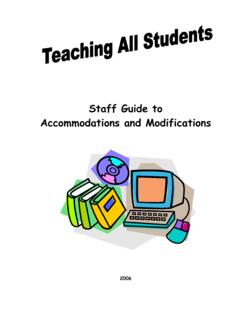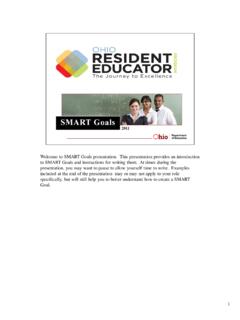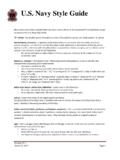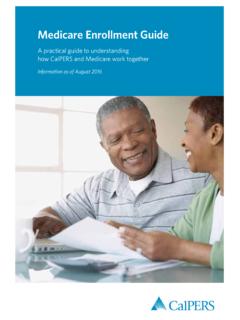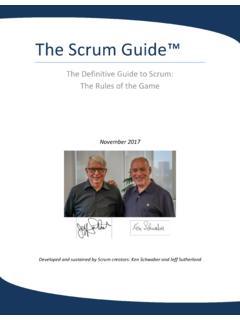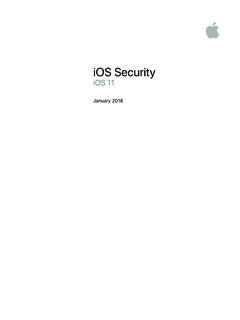Transcription of Guide - Shaker Home
1 GuideExtended essayExtended essayGuidePublished February 2016 Published byInternational Baccalaureate Organization15 Route des Morillons1218 Le Grand-SaconnexGeneva, SwitzerlandRepresented byIB Publishing Ltd, Churchillplein 6, The Hague, 2517JW The Netherlands International Baccalaureate Organization 2016 The International Baccalaureate Organization (known as the IB) offers four high-quality and challengingeducational programmes for a worldwide community of schools, aiming to create a better, more peacefulworld. This publication is one of a range of materials produced to support these IB may use a variety of sources in its work and checks information to verify accuracy and authenticity,particularly when using community-based knowledge sources such as Wikipedia. The IB respects theprinciples of intellectual property and makes strenuous efforts to identify and obtain permission beforepublication from rights holders of all copyright material used.
2 The IB is grateful for permissions receivedfor material used in this publication and will be pleased to correct any errors or omissions at the rights reserved. No part of this publication may be reproduced, stored in a retrieval system, or transmitted,in any form or by any means, without the prior written permission of the IB, or as expressly permitted by lawor by the IB s own rules and policy. See merchandise and publications can be purchased through the IB store at : Baccalaureate, Baccalaure#at Internationa and BachilleratoInternacional are registered trademarks of the International Baccalaureate mission statementThe International Baccalaureate aims to develop inquiring, knowledgeable and caring young people whohelp to create a better and more peaceful world through intercultural understanding and this end the organization works with schools, governments and international organizations to developchallenging programmes of international education and rigorous programmes encourage students across the world to become active, compassionate and lifelonglearners who understand that other people, with their differences, can also be of Contents 51.
3 Introduction to the Diploma The Diploma Programme Choosing the right General introduction to the core of the Diploma The core of the Diploma Coherence in the Supporting, and being supported by, the academic Fostering Developing self-awareness and a sense of Approaches to teaching and Approaches to teaching and learning and the extended Approaches to Approaches to The IB mission statement and the IB learner Academic Acknowledging the ideas or work of another Learning diversity and learning support 332. Overview of the extended Overview of the extended The extended essay at a Prior The nature of the extended Engaging with sensitive Policies relevant to the extended Assessment Reflection in the Reflection in the extended 423.
4 Supporting the extended 43 Supporting the extended Administrative requirements of the extended Pedagogical support for the extended The Diploma Programme/extended essay The The The role of the Overview of the librarian s Support for the extended Important note on the role of external Researcher's reflection The nature of the The role of the The student supervisor 574. Introducing students to the extended Introducing students to the extended The supervision Distinguishing between a supervision session and a reflection Check-in sessions .. Formal reflection Supporting the mandatory reflection Reflection Preparation for the first reflection First formal reflection Preparation for the interim reflection The interim reflection Accommodating a change of Commenting on a draft version of the extended Submission Preparation for the final reflection session.
5 Final reflection session .. Authenticating student Protocols for completing and submitting the .. 725. The research and writing Initial guidance on research and 76 Developing a research Five steps to developing a research question .. Sample research Writing the extended Title Contents Body of the essay (research, analysis, discussion and evaluation).. References and Word Footnotes and Appendices .. Specimen Academic Referencing online Accessing sources: technology literacy using electronic Using online encyclopedias and other similar information Use of computer Reliance on external 936. Assessment in the Diploma Methods of Assessment Analytic Marking Assessment of the extended Inclusive assessment Responsibilities of the Overview of the assessment criteria for the extended 98 Best-fit approach and The assessment Criterion A: Focus and Criterion B: Knowledge and understanding.
6 Criterion C: Critical Criterion D: Criterion E: Assessment grade descriptors for the extended Unpacking the 1097. Subject-specific General Choice of Research Treatment of the 1148. Studies in language and Studies in language and literature: Subject-specific Choice of Treatment of the Interpreting the EE assessment 1239. Language acquisition, including classical Language acquisition, including classical Language acquisition: Subject-specific Choice of Treatment of the Interpreting the EE assessment Classical Greek and Latin studies: Subject-specific Choice of Treatment of the Interpreting the EE assessment 14210. Individuals and Individuals and Business management: Subject-specific 146 Choice of Treatment of the Interpreting the EE assessment Economics: Subject-specific Choice of Treatment of the Interpreting the EE assessment Geography: Subject-specific Choice of Treatment of the Interpreting the EE assessment Global politics: Subject-specific Choice of Treatment of the Interpreting the EE assessment History: Subject-specific Choice of Treatment of the Interpreting the EE assessment Information technology in a global society: Subject-specific Choice of Treatment of the Interpreting the EE assessment Philosophy.
7 Subject-specific Choice of Treatment of the Interpreting the EE assessment Psychology: Subject-specific Choice of Treatment of the Interpreting the EE assessment Social and cultural anthropology: Subject-specific Choice of Treatment of the 221 Interpreting the EE assessment World religions: Subject-specific Choice of Treatment of the Interpreting the EE assessment 23411. The The Biology: Subject-specific Choice of Treatment of the Interpreting the assessment Chemistry: Subject-specific Choice of Treatment of the Interpreting the EE assessment Computer science: Subject-specific Choice of Treatment of the Interpreting the EE assessment Design technology: Subject-specific Choice of Treatment of the Interpreting the EE assessment Physics: Subject-specific Choice of Treatment of the Interpreting the EE assessment Sports, exercise and health science: Subject-specific Choice of Treatment of the Interpreting the EE assessment 28912.
8 Mathematics: Subject-specific 295 Choice of Treatment of the Interpreting the EE assessment 29913. The The arts: Subject-specific Dance: Subject-specific Choice of Treatment of the Interpreting the EE assessment Film: Subject-specific Choice of Treatment of the Interpreting the EE assessment Music: Subject-specific Choice of Treatment of the Interpreting the EE assessment Theatre: Subject-specific Choice of Treatment of the Interpreting the EE assessment Visual arts: Subject-specific Choice of Treatment of the Interpreting the EE assessment 34714. Interdisciplinary Interdisciplinary Environmental systems and societies: Subject-specific Choice of Treatment of the Interpreting the EE assessment Literature and performance: Subject-specific 360 Choice of Treatment of the Interpreting the EE assessment World Studies: Subject-specific Choice of Treatment of the Interpreting the EE assessment 372 Extended essayIntroduction 13 Introduction to the Diploma ProgrammeThe Diploma Programme is a rigorous pre-university course of study designed for students in the 16 to 19age range.
9 It is a broad-based two-year course that aims to encourage students to be knowledgeable andinquiring, but also caring and compassionate. There is a strong emphasis on encouraging students todevelop intercultural understanding, open-mindedness, and the attitudes necessary for them to respectand be able to evaluate a range of points of Diploma Programme modelThe programme is presented as six academic areas enclosing a central core (see figure 1). It encouragesthe concurrent study of a broad range of academic areas. Students study two modern languages (ora modern language and a classical language), a humanities or social science subject, an experimentalscience, mathematics and one of the creative arts. It is this comprehensive range of subjects that makesthe Diploma Programme a demanding course of study designed to prepare students effectively foruniversity entrance.
10 In each of the academic areas students have flexibility and can choose subjects thatparticularly interest them and that they may wish to study further at 1 The Diploma Programme model 14 Choosing the right combinationStudents are required to choose one subject from each of the six academic areas, although they canchoose a second subject from groups 1 to 5 instead of a group 6 subject. Normally, three subjects (andnot more than four) are taken at higher level (HL), and the others are taken at standard level (SL). TheIB recommends 240 teaching hours for HL subjects and 150 hours for SL. Subjects at HL are studied ingreater depth and breadth than at both levels, many skills are developed, especially those of critical thinking and analysis. At the end ofthe course, students abilities are measured by means of external assessment. Many subjects contain someelement of coursework that is assessed by assessment 2018 General introduction to the core of the DiplomaProgramme The core of the Diploma Programme Coherence in the core Approaches to teaching and learning Approaches to teaching and learning and the extended essay Approaches to teaching Approaches to learning The IB mission statement and the IB learner profile Academic honesty Learning diversity and learning support requirements 15 The core of the Diploma ProgrammeAll Diploma Programme students participate in the three elements that make up the core of theprogramme: theory of knowledge creativity, activity, service the extended three elements of the core complement each other, working together to achieve the followingcommon aims.
